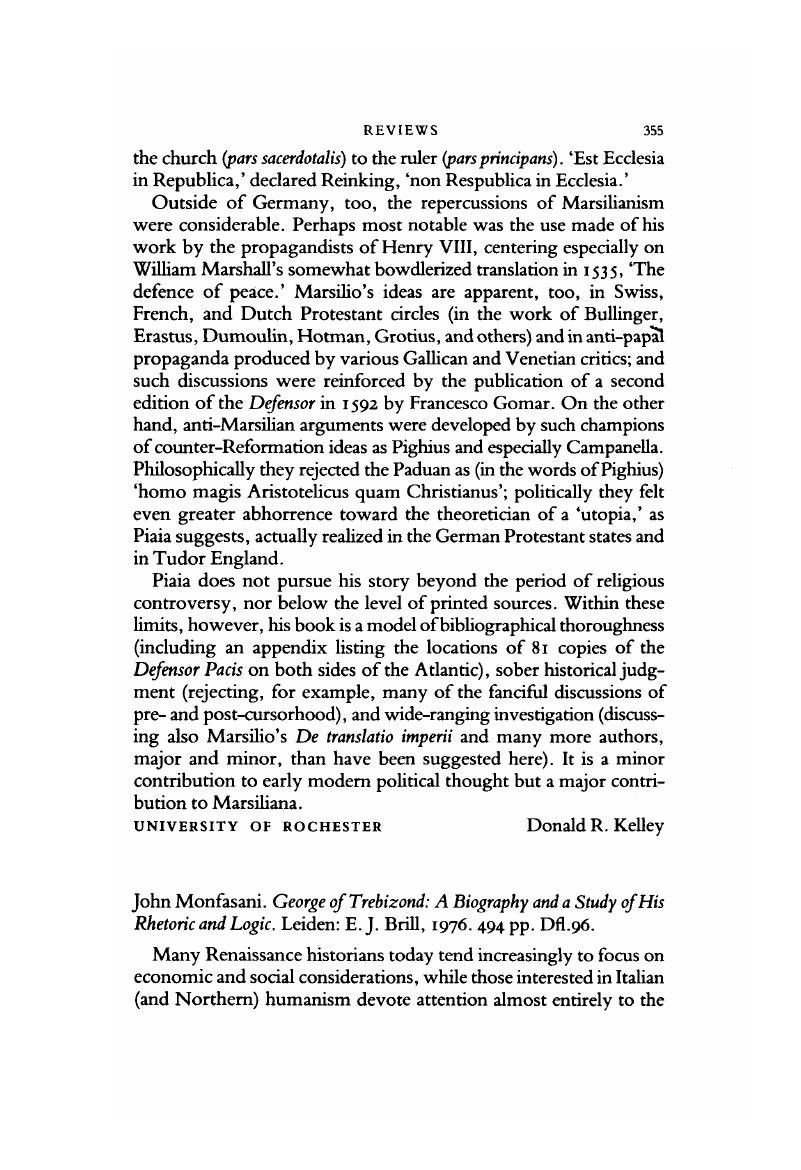No CrossRef data available.
Published online by Cambridge University Press: 20 November 2018

1 Valla said a decade later that George was generally considered ‘the most learned rhetorician of their age', and certainly superior to Poggio (p.80).
2 See Geanakoplos, D., Interaction of the ‘Sibling’ Byzantine and Western Cultures in the Middle Ages and Italian Renaissance (Yale, 1976), p. 272 Google Scholar and n. 22
3 Monfasani cites a letter of George's mentioning a discussion with Pletho, presumably at the Council of Florence, where he declared his hope for a pagan religious revival (p.200f.).
4 That Bessarion, as George believed, may not (always) have exhibited the high-minded character usually attributed to him seems also corroborated in my Interaction of the Sibling… Cultures, 234-35, on Chalcondyles’ statement about a bad personal experience with him.
5 Actually, George himself opposed Bessarion and Valla's views on New Testament textual emendations; George supported the older readings (e.g., of Jerome).
6 See references in Geanakoplos, Interaction, 202-203 with notes, and my forthcoming biography of the Cretan scholastic-humanist Peter of Candia (later Pope Alexander V) who lived 1340—1410.
7 Bouwsma, W. J., presidential address to AHA: ‘The Renaissance and the Drama of Western History,’ AHR, 84 (1979), 1–15 Google Scholar.
8 Not of course in the sense of the antiquated sixteenth to eighteenth century view that ‘Byzantine refugees to Italy brought about the Renaissance,’ but in the ‘horizontal’ sense of cross-fertilization between one kind of contemporary culture and another, between two ‘fraternal’ Christian societies and their civilizations. For an attempt at this sort of treatment see Geanakoplos, D., Medieval Western Civilization and the Byzantine and Islamic Worlds: Interaction of Three Cultures (D. C. Heath, 1979)Google Scholar esp. chaps. 13-14.